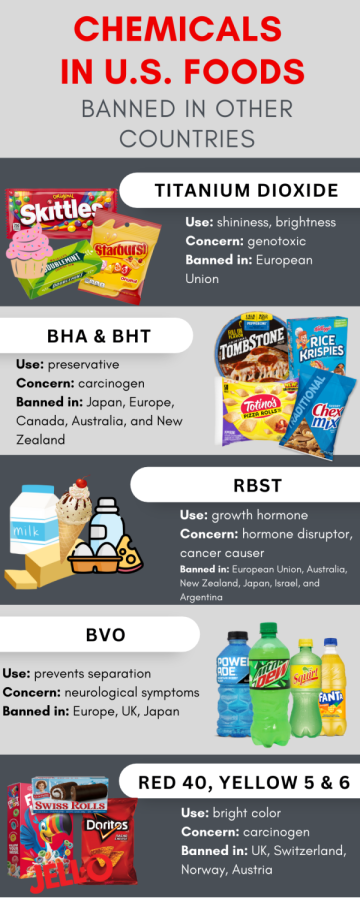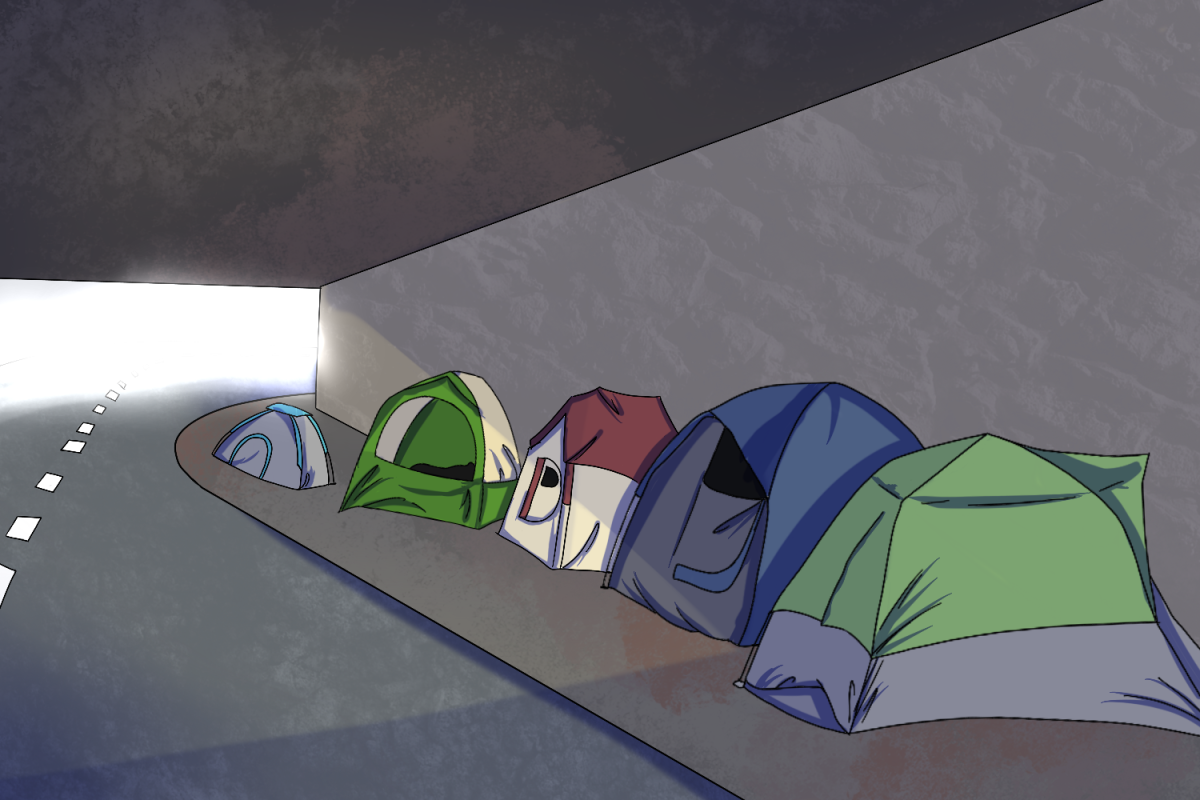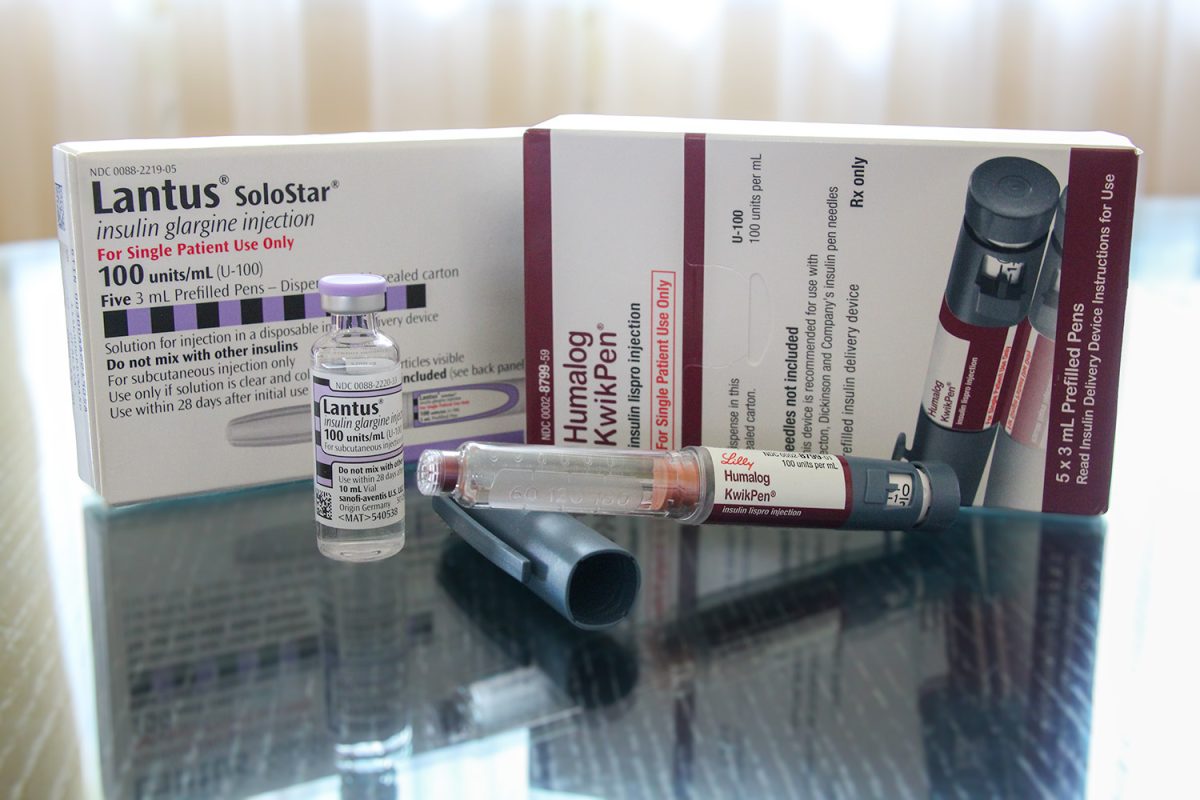You start your day with a cup of coffee flavored with your favorite Coffee mate creamer. You pour a bowl of your favorite cereal: Frosted Flakes, your go-to pick from your local Safeway. As the clock reads 8 a.m., you begin to leave for school but suddenly remember you need a snack to bring! No problem; you grab a Pop-Tart, the quick and delicious pastry you love.
These foods are popular among Americans, but this is not a regular morning routine in many places outside the United States, such as Europe, Australia, Japan, and the Scandinavian countries. Those foods — and many more — are banned in many developed nations worldwide, sparking the question: are American food standards up to par?
It’s no secret that the stereotypical American diet is unhealthy. For decades, the United States has had the highest obesity rate among high-income countries. Adults over the age of 50 are more likely to develop and die from cardiovascular disease than adults in other high-income countries. Poor diet is one of the leading causes in the development of both these conditions, so why do Americans continue to make unhealthy food choices, despite living in the wealthiest country in the world?
Of course, a healthy lifestyle is largely up to the consumer and what they choose to eat. But when American grocery stores hide controversial chemicals that are banned in other regions in common foods, we must look to the government to take some responsibility. For example, BHA and BHT, the preservatives used in Frosted Flakes and other store-bought cereals, are carcinogens linked to tumor growth and blood clots. They are banned in Japan, the European Union, Canada, Australia, and New Zealand, but not in America. This is only the tip of the iceberg.
The Food and Drug Administration (FDA) was established in the United States in 1906 in an effort to reassure Americans that their health is being prioritized. However, an extreme lack of regulation within the FDA is seen. In a striking example, the FDA approved the use of perchlorate in food packaging and equipment in 2005, despite its proven effects as a neurological and endocrine disruptor. The agency’s failure to fully account for the hazards it poses to people indicates systemic issues with the regulation of chemicals in food.

The problem spans even wider than the troubling chemicals, extending to other government industries that negatively affect consumers. Under the Donald Trump Administration, the government proved its intent to weaken federal oversight of industries, especially slaughterhouses. In 2019, pork slaughterhouses were allowed to have even fewer USDA inspections, despite the fact that between 2012 and 2016, there were 22 instances where federal inspectors cited companies for failing to identify and remove from the slaughter line a pig carcass that could cause food poisoning. Once again, evidence proves that a hands-off system is ineffective in America.
The system in the U.S. clashes with other countries, notably the European Union. While the United States has the federally established FDA, in the EU, the food standards laws are all streamlined into one governing body: the European Food Safety Authority (EFSA). This shows a key difference in the management of food standards. The United States has a federal administration, while Europe has one non-federal organization.
Another difference is the FDA process of approving foods. The FDA tends to take a more reactive approach to food standards inspections, as it allows food additives unless they’re proven to be directly harmful. In Europe, the additives must be proven unharmful before they can be used in food production. This means we see growth hormones and chemical preservatives in food production here in the U.S., whereas EFSA is strictly against the use of hormones and strongly advises against manufacturers using preservatives.
Furthermore, 113 nations were studied by the Global Food Security Index (GFSI), which ranked them according to their food standards. The study scored countries on the safety of their food, as well as its affordability, availability, and quality. Seven of the top 10 countries are in Europe. The US is tied for ninth with France, while the Netherlands, Canada, and Switzerland placed higher, demonstrating the reign of these other nations as top picks.
Looking at this study, the U.S. is not the worst country regarding food quality and safety, but compared to other developed and higher-ranked countries, American regulation is not doing enough. Combining a nation that has a large affection towards fatty, greasy foods with supermarkets containing aisles of foods packed with chemicals and preservatives is not clever.
The government needs to take a more proactive approach to these issues in order to protect the health of its citizens and the environment. It’s time for America to catch up with the rest of the world’s food standards.

































